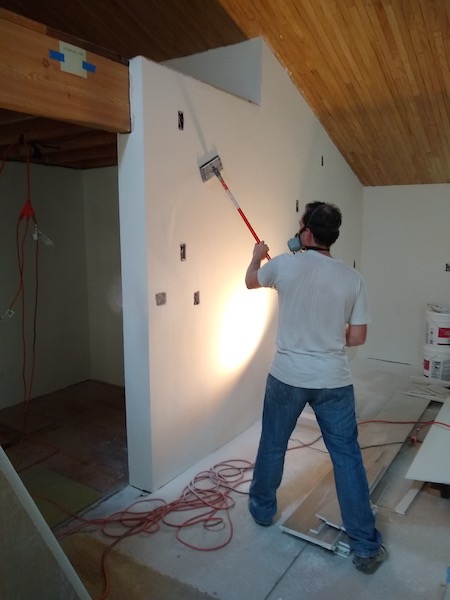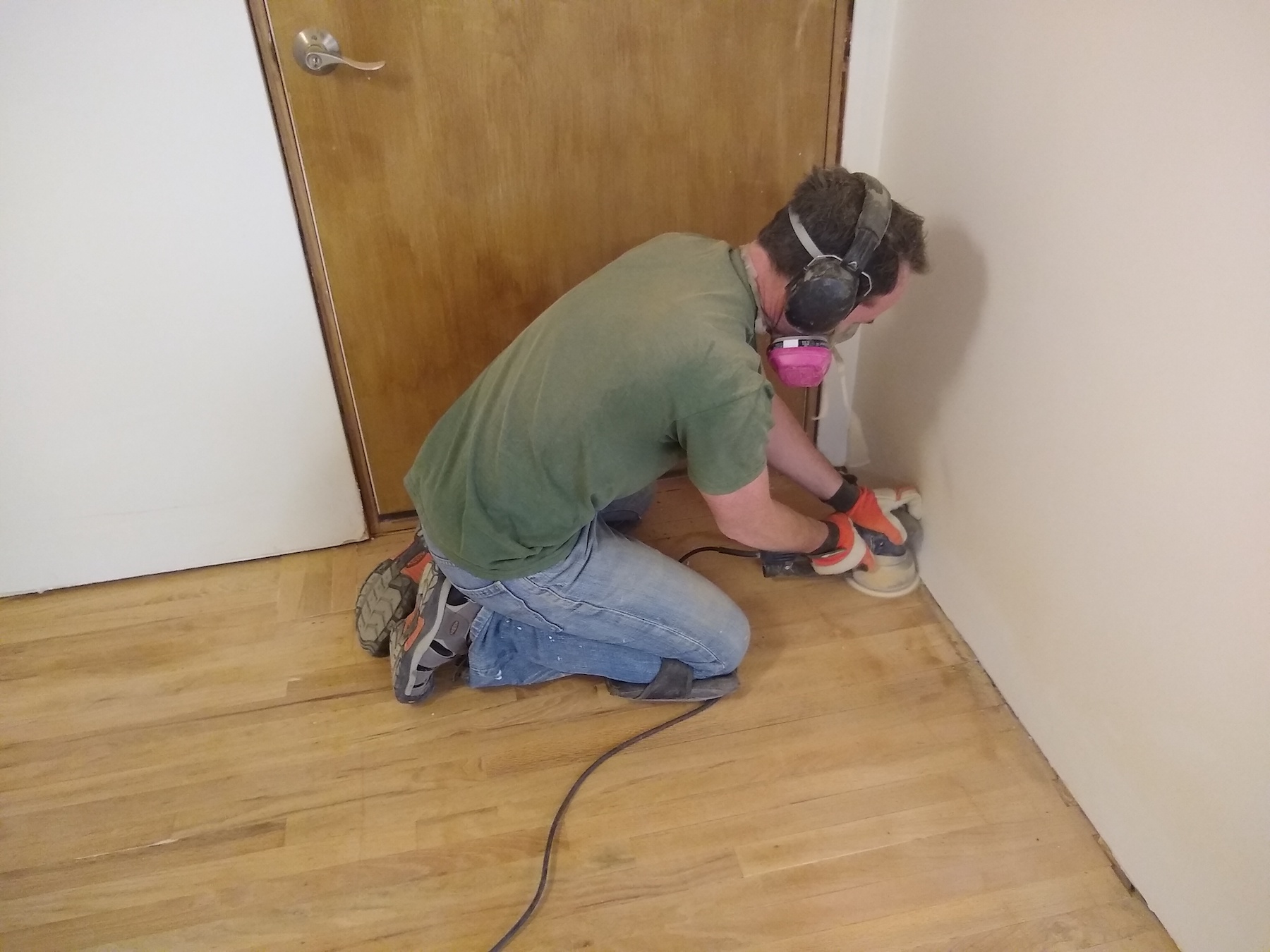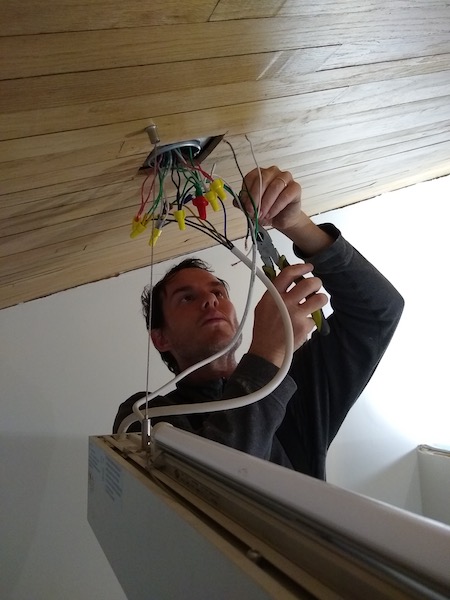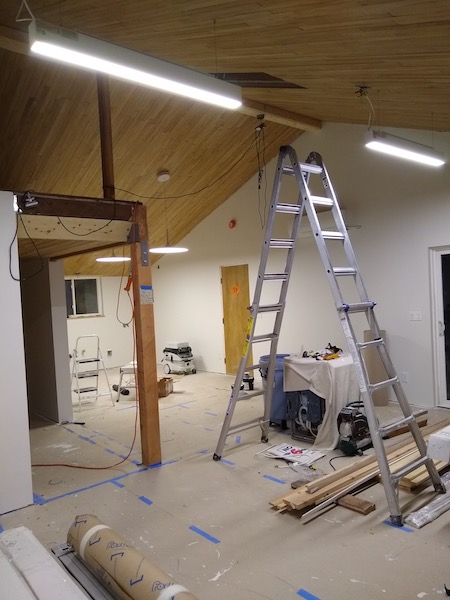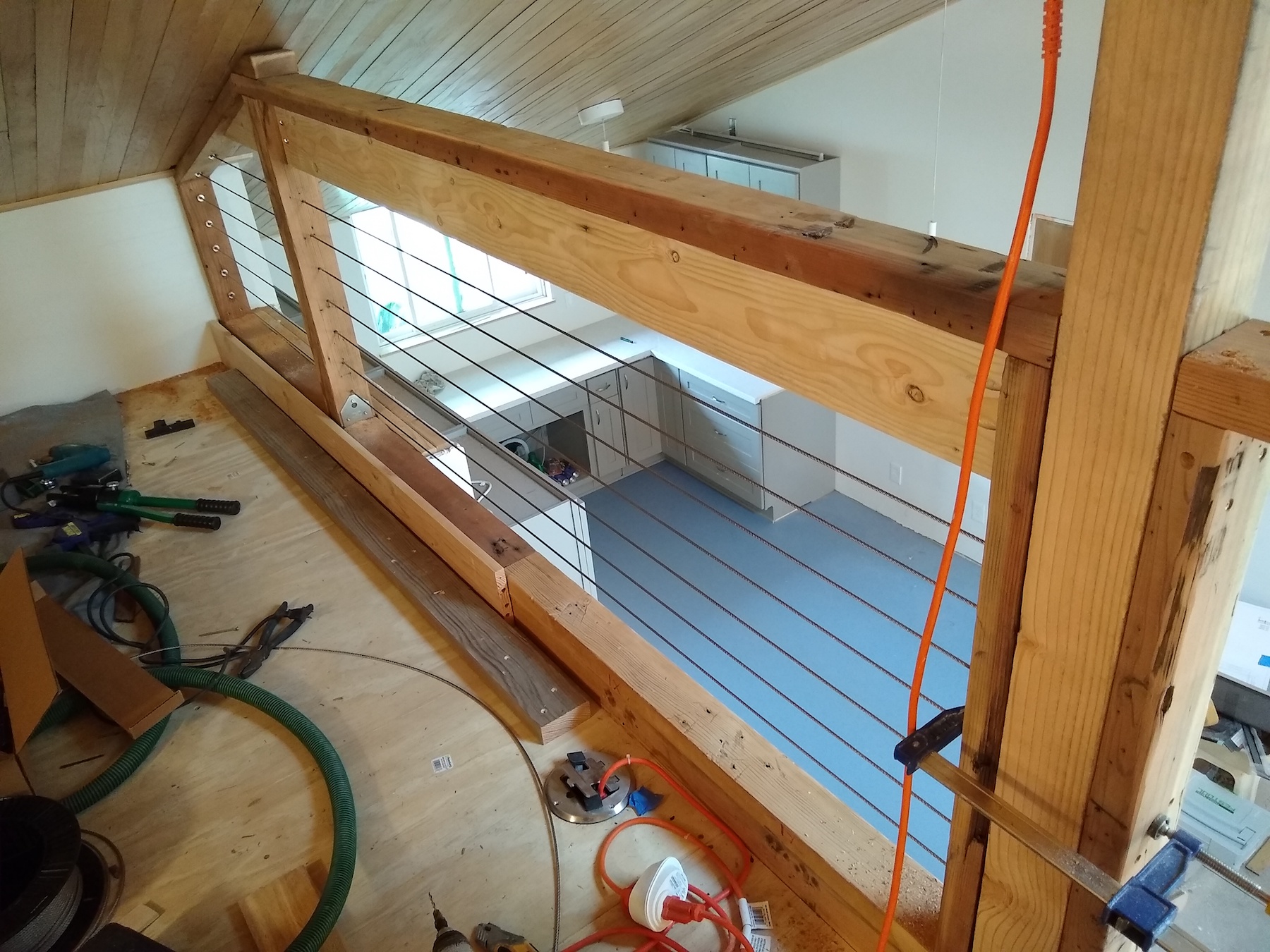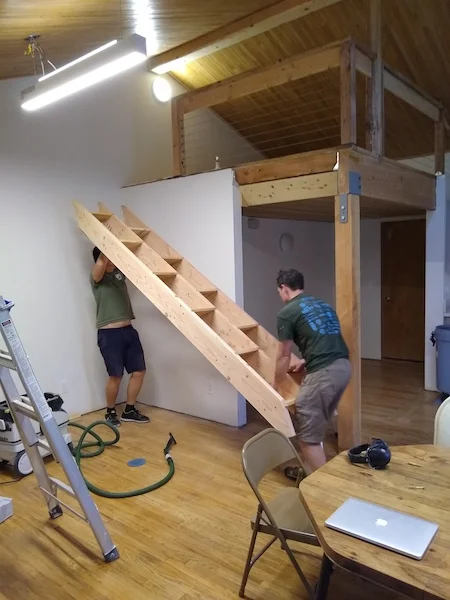Epic House Update #2: Drywall | Flooring | Lighting | Loft
Our blog has fallen woefully behind. So here’s our attempt at a massive “catch up” to bring our posts up to the present(ish) date!
While each of these topics deserves its own detailed post, we unfortunately don’t have time to do them all justice right now. So instead, here is a HUGE dump of photos with brief text explanations. Better than nothing, right?
We are happy to answer detailed questions so feel free to leave a comment or send us a message about anything here.
This is part 2 of 3, which covers:
For more updates, check out: Part 1: Skylight | Crawl space | Heating/Cooling | Wiring and Part 3: Kitchen
Ready? Here we go!
DRYWALL
Hooray for finally putting up the finished surface so our walls actually look like walls!
Each piece of drywall had to be carefully measured. My brother Bin and our friend Sang helped Chris cut and hang the drywall.
The transformation is happening! Dramatic lighting in the late afternoon:
Given the vaulted nature of our common area, some angled cuts were necessary.
After the sheets were hung, Chris used joint compound to patch the seams and screws.
Because not all the sheets were perfectly perpendicular to the floor and lined up flat with one another, Chris ended up “mudding” the entire wall surface with joint compound to smooth out the imperfections, which was rather laborious and time-consuming.
Note all the holes in the drywall for electrical outlets, wire receptacles, and light switches (this is our kitchen!). Each one had to be meticulously measured and cut out of the drywall.
He then sanded the joint compound layer down so it was nice and smooth, which was even more laborious and time-consuming (not to mention messy).
(Note: Really experienced drywall installers generally do a good enough job hanging the sheets that they don’t need to mud the entire wall surface or sand it down so much. But, Chris is not experienced.)
After several days of mudding and sanding, the fun part! Painting the walls. (You can’t really tell the difference because it’s white on white.) Our friend Nikki joined in on the fun.
Ta da! Beautiful white walls. It makes a huge difference — the room looks much cleaner and brighter! It’s actually starting to look like a room.
FLOORING
Under our ugly brown carpet was the original, beautiful oak hardwood floors. Chris wanted to uncover and refinish the floors, and return them to their original glory!
First, he had to remove the decades-old, disgusting carpet and sweep the hell out of the floor.
There’s a carpet monster on our driveway, run!
He then had to fill in a few spots that didn’t have any hardwood floor with new flooring. These were places where Chris had removed walls, closets, or (shown below) a fireplace.
Below you can see the difference in color between old pieces (darker) and new pieces (lighter). Chris also filled in any large gaps between pieces with wood putty.
In order to smooth out the surface and make all the wood pieces a similar color, Chris used a floor sander to remove the stained, darker top layer of the older original wood. He rented a square buff floor sander from Home Depot. (Although in hindsight, he kind of wishes he rented a drum sander.)
He also used a hand-held power sander for the edges.
How the floor looked after sanding:
After the floor was sufficiently sanded, Chris applied a couple coats of water-based polyurethane floor finish. It made the floor shiny and pretty, although it stunk up the house for a few days. (If we shelled out more dollars, we could have purchased non-stinky no-VOC floor finish… and we kind of wish we did.)
There it is! The beautiful, revived oak flooring. 😍
LIGHTING
Choosing the lighting for our renovated common area was fun but also very challenging, because we had to decide where all the lights would go (and what kind of lights they would be) before the walls and ceiling were finished (back when we installed all the electrical wiring and receptacles). So we really had to use our imagination and try to look into the future.
All of the lights that we put in were LEDs, since they are the most energy-efficient bulbs on the market and have the longest lifespan.
For the living room, we decided to put in two linear suspension lights. Here is Chris hanging them up:
The lights are dimmable as well as on a 3-way switch (a.k.a. you can turn the lights on/off from two different light switches), so this meant a huge gaggle of wires. Luckily, Chris thoughtfully color coated them so he didn’t get confused about which connected to what.
Chris also wanted lights that shine up as well as down, in order to highlight our beautiful repurposed floorboard ceiling. But it turns out linear suspension lights that have both up-and-down lights are ridiculously expensive (like over $400 each).
Instead of buying those, Chris got linear lights that shine only downwards (which were more like $70 each) and then got separate small linear lights (about $80 each) that could sit on top of the other ones. He fashioned some bracket thingies to hold the lights together, and voila! DIY linear up-and-down lights for less than half the price.
In the kitchen, Chris installed two modern, disc-shaped pendant lights (also dimmable).
This is arguably a pretty sketchy set-up right here:
(Luckily there were no earthquakes during the installation process.)
Chris used a laser level to make sure the two pendant lights were horizontally lined up.
This place is lit!
LOFT
One of Chris’ most creative design ideas for the common area was to convert one section of the old attic into a loft, located right above the front entrance of the house.
Here’s Bin helping Chris install the plywood floors for the loft:
The beginnings of the railing, a lot of which Chris built using repurposed wood:
Chris installing cables in the railing:
The loft is coming along! But how do people get up into it?
We’ll need some stairs. Chris designed an alternating tread staircase and hand-built it from scratch. Here he is using a router to cut out the notches for the steps.
The unassembled pieces of the staircase:
Our friend Lac was a big help in putting together the stairs. Thank you, Lac!
A 3-D puzzle:
Putting the stairs into place:
Nice! The inaugural climb of Chris’ alternating tread staircase was a success.
Here is the finished loft with staircase (complete with metal railing).
The loft is small and cozy (you can barely stand up in it). We envision it to be a little reading nook, or a place for a guest to sleep, or a little play area for children.
See more epic house updates:







